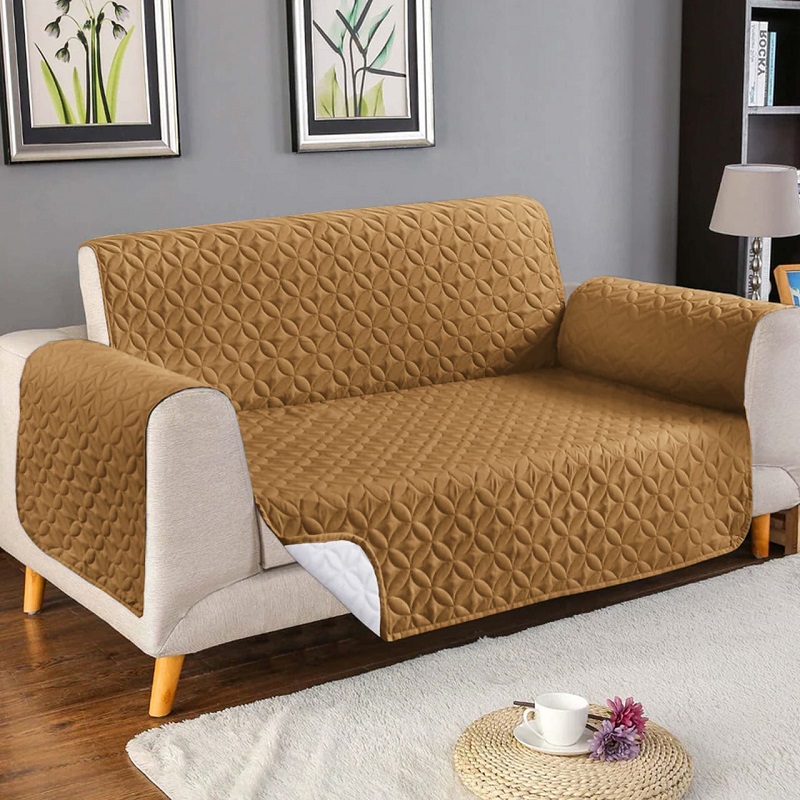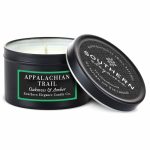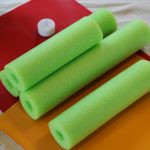Choosing the perfect sofa cover for your home decor involves more than just picking a color or pattern. It requires understanding various factors, including material, size, and style, to ensure that your choice enhances the overall aesthetic of your space while providing functionality. This comprehensive guide will walk you through the essential considerations and options available to help you make an informed decision.
Understanding Your Home Decor Style
Identifying Your Interior Design Theme
Before selecting a sofa cover, it’s crucial to identify your home’s interior design theme. Whether your space leans towards modern minimalism, classic elegance, or rustic charm, your sofa cover should complement these elements. For instance, a sleek, neutral-toned cover would enhance a contemporary setting, while a floral or patterned cover might suit a more traditional or eclectic decor. Consider the color palette, textures, and overall ambiance of your room to ensure harmony between your sofa cover and existing furnishings.
Coordinating with Existing Furniture
Your sofa cover should coordinate with other furniture pieces in your room. Assess the colors, styles, and materials of your existing furniture to find a cover that complements them. If you have a mix of textures and patterns, a solid-color cover might provide a cohesive look, whereas a patterned cover could add a dynamic element to a more subdued environment. Pay attention to how the cover interacts with your other decor items, such as curtains, rugs, and cushions, to create a balanced and cohesive appearance.
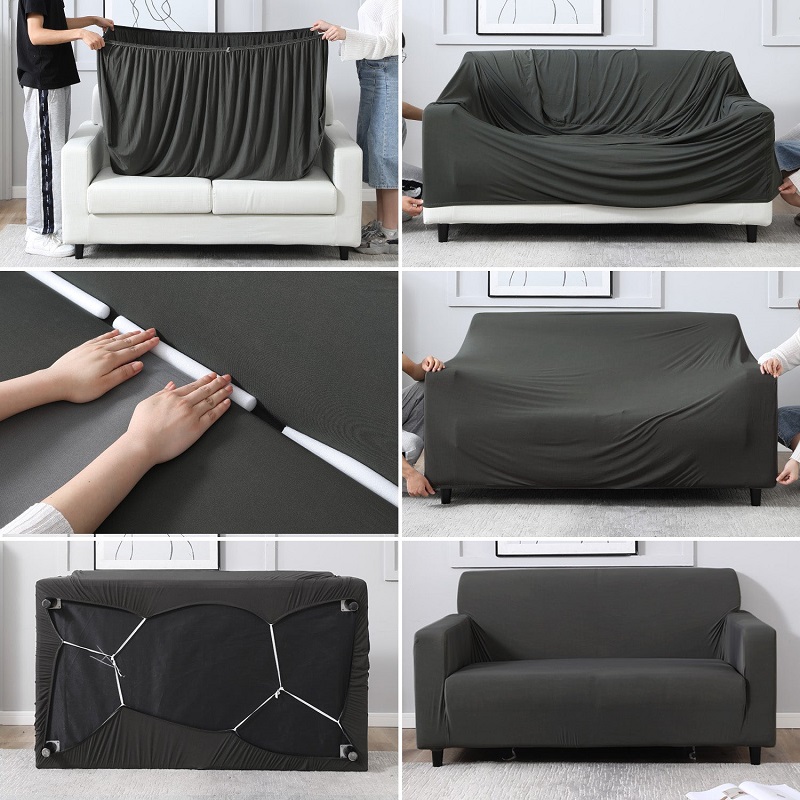
Selecting the Appropriate Material
Fabric Choices and Their Characteristics
The material of your sofa cover plays a significant role in its functionality and appearance. Common fabric options include cotton, polyester, velvet, and microfiber, each offering distinct characteristics. Cotton covers are breathable and easy to clean, making them a practical choice for everyday use. Polyester is durable and resistant to wrinkles, while velvet provides a luxurious and elegant look. Microfiber is known for its softness and stain resistance. Consider how each material aligns with your lifestyle, maintenance preferences, and aesthetic goals.
Durability and Maintenance Considerations
Durability and ease of maintenance are crucial factors when selecting a sofa cover. If you have pets or young children, you might opt for a fabric that is resistant to stains and wear, such as polyester or microfiber. Additionally, choose a cover that is easy to remove and clean, either through machine washing or spot cleaning. For high-traffic areas, a more durable fabric will help maintain the cover’s appearance and longevity, ensuring it continues to enhance your decor over time.
Measuring Your Sofa for the Perfect Fit
Accurate Dimensions and Fitting Tips
To ensure your sofa cover fits perfectly, accurate measurements are essential. Start by measuring the length, width, and height of your sofa, including the arms and back. Check if your sofa has removable cushions, as this can affect the cover’s fit. Some covers come with elastic or adjustable features to accommodate various sofa shapes and sizes, so consider these options if you have an unusually shaped sofa. Proper measurements and fitting will help avoid ill-fitting covers that can disrupt the visual harmony of your room.
Choosing Between Custom and Standard Covers
Depending on your sofa’s dimensions and style, you may need to decide between custom-made and standard sofa covers. Custom covers are tailored to your sofa’s specific measurements, ensuring a perfect fit and seamless look. However, they can be more expensive and may require additional time for production. Standard covers, on the other hand, are available in various sizes and shapes, offering a more budget-friendly option. Evaluate your budget and timeline to determine which option best suits your needs.
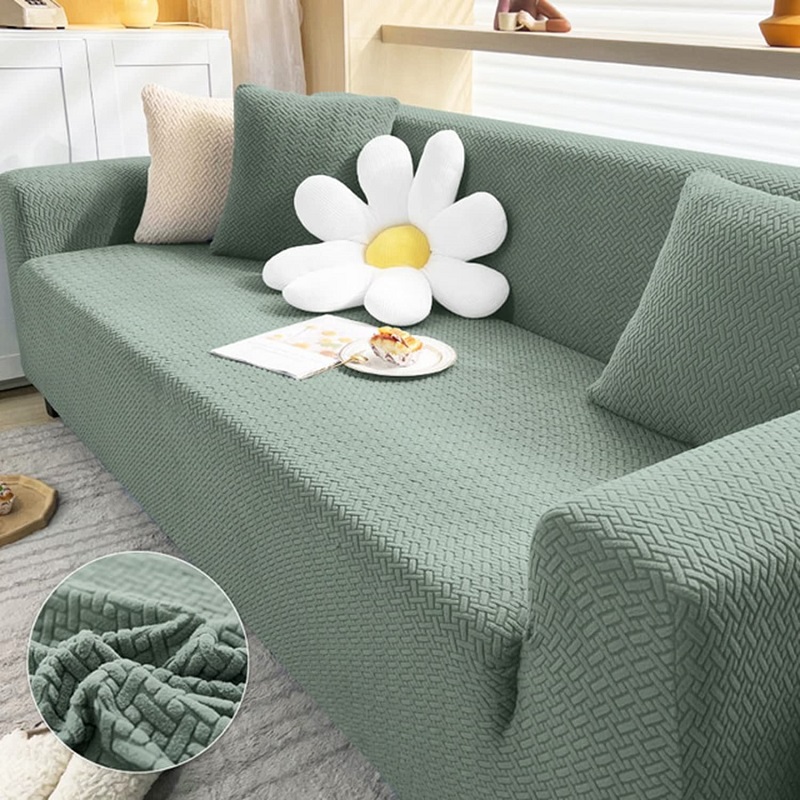
Considering Color and Pattern Options
Impact of Color on Room Aesthetics
The color of your sofa cover significantly influences the overall look and feel of your room. Neutral tones like beige, gray, or white provide a versatile backdrop that complements a wide range of decor styles and color schemes. For a more vibrant or dramatic look, consider bold colors or rich hues that make a statement. Additionally, darker colors can be practical for hiding stains, while lighter colors can brighten a space. Choose a color that aligns with your room’s existing palette and desired ambiance.
Choosing Patterns and Textures
Patterns and textures can add visual interest and depth to your space. Patterns such as stripes, geometric shapes, or florals can introduce dynamic elements and complement other decor items. Textures, such as quilted or ribbed fabrics, can enhance the tactile experience of your sofa. When selecting patterns and textures, ensure they align with your overall decor style and do not overwhelm the space. Mixing and matching patterns should be done carefully to maintain a cohesive and balanced look.
Evaluating Practical Features
Stretchable vs. Non-Stretchable Covers
Sofa covers come in stretchable and non-stretchable varieties, each offering different benefits. Stretchable covers, often made from spandex or elastic materials, conform to the shape of your sofa, providing a snug fit and accommodating various sofa sizes. These covers are generally easier to install and adjust. Non-stretchable covers, such as those made from fixed fabrics, offer a more tailored appearance but may require more precise measurements. Consider your preference for fit and ease of installation when choosing between these options.
Slipcovers and Fitted Options
Slipcovers and fitted options each have unique advantages. Slipcovers are removable and washable, making them a practical choice for families with pets or children. They are also available in various styles, including loose-fit and tailored designs. Fitted covers, which are often made from stretchable fabrics, provide a more streamlined and custom look. Evaluate your needs for convenience, aesthetics, and ease of maintenance to decide which type best suits your lifestyle and decor.
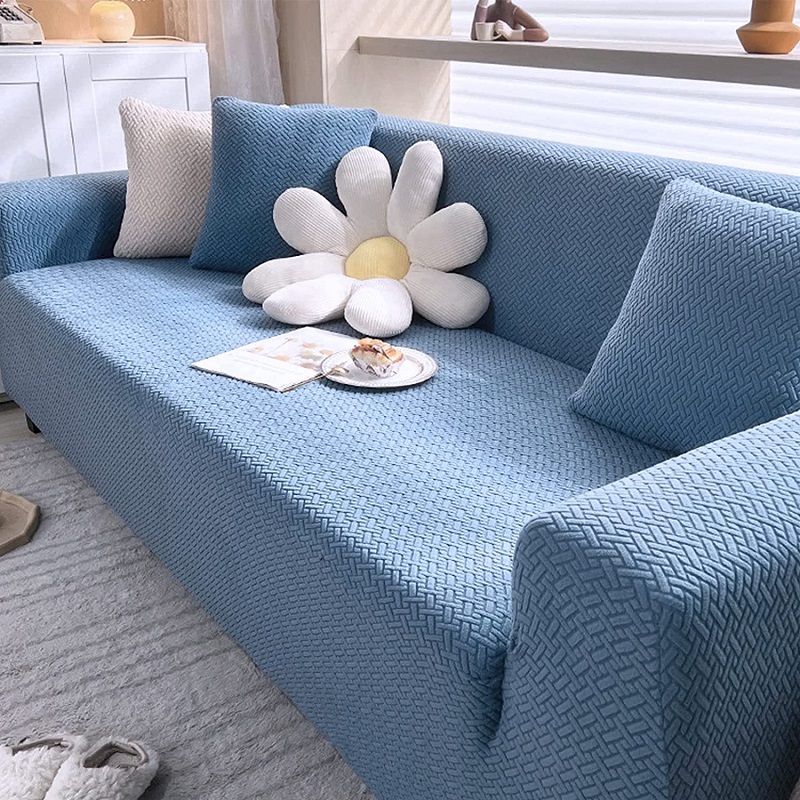
Enhancing Comfort and Functionality
Padding and Cushioning Features
Some sofa covers come with additional padding or cushioning features, which can enhance comfort and support. These covers often include extra layers of foam or quilted padding that provide a softer seating experience and can help protect your sofa from wear and tear. If comfort is a priority, consider covers with built-in cushioning or those that add a plush layer to your sofa. This feature can be particularly beneficial for improving the overall seating experience in your living area.
Built-In Storage and Utility Pockets
Certain sofa covers offer built-in storage solutions, such as utility pockets or compartments. These features provide convenient storage for remote controls, magazines, or other small items, helping to keep your living space organized and clutter-free. Utility pockets are especially useful in family or multi-purpose rooms where additional storage is valuable. When selecting a cover with storage features, ensure that the pockets are easily accessible and do not interfere with the cover’s fit or appearance.
Exploring Eco-Friendly Options
Sustainable Materials and Practices
As environmental awareness grows, many sofa covers are now available in eco-friendly materials. These options include fabrics made from recycled fibers, organic cotton, or other sustainable sources. Choosing eco-friendly covers not only supports environmental conservation but also adds a conscientious touch to your home decor. Look for certifications or labels indicating sustainable practices and materials to ensure that your sofa cover aligns with your values and contributes to a greener lifestyle.
Reusable and Long-Lasting Designs
Investing in reusable and long-lasting sofa covers can contribute to reducing waste and promoting sustainability. Opt for high-quality materials and durable designs that withstand frequent use and washing. By choosing a cover that is built to last, you minimize the need for replacements and reduce your environmental footprint. Reusable covers offer a practical and eco-friendly solution for maintaining your sofa’s appearance while minimizing waste and promoting responsible consumption.
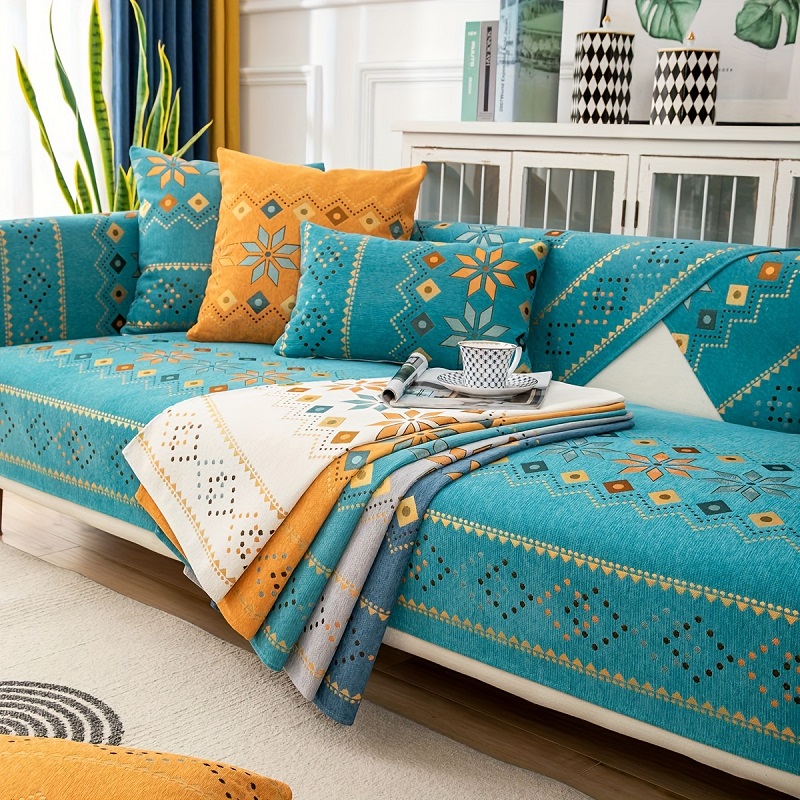
Budgeting and Cost Considerations
Setting a Realistic Budget
When selecting a sofa cover, it’s important to set a realistic budget that aligns with your needs and preferences. Prices for sofa covers can vary widely based on factors such as material, size, and custom features. Establishing a budget helps narrow down your options and ensures that you make a purchase that meets both your aesthetic and financial requirements. Consider the long-term value of your investment, including durability and maintenance costs, to make an informed decision within your budget.
Evaluating Cost vs. Quality
Balancing cost and quality is essential when choosing a sofa cover. While lower-priced options may be budget-friendly, they might lack the durability or aesthetic appeal of higher-quality covers. Invest in a cover that offers good value for money, considering factors such as material quality, fit, and design. Quality covers often provide better longevity and maintain their appearance over time, making them a worthwhile investment for your home decor.
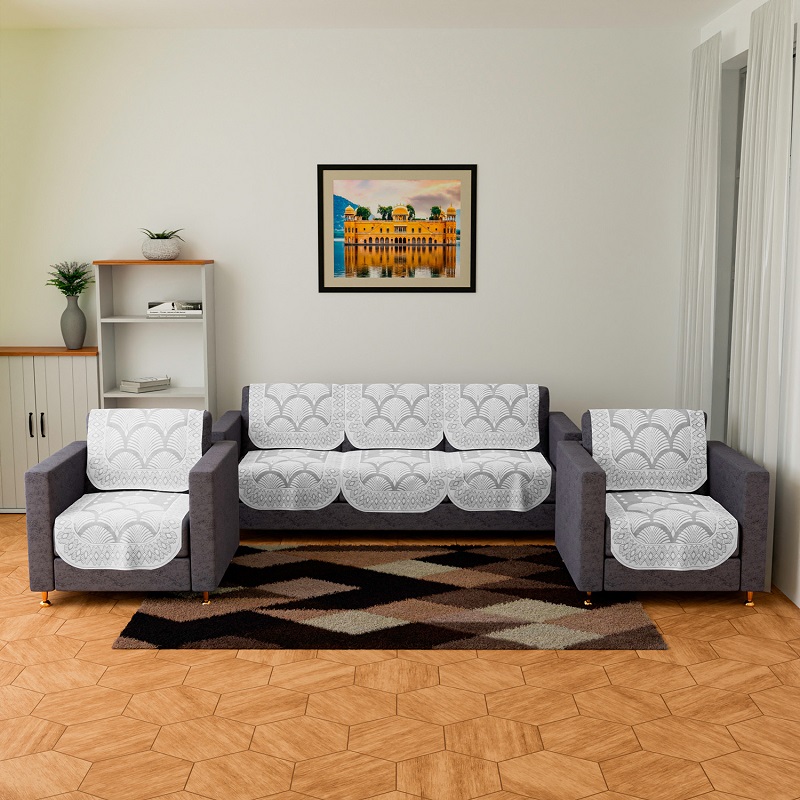
Conclusion
Selecting the right sofa cover for your home decor involves careful consideration of various factors, including material, fit, color, and functionality. By understanding your decor style, evaluating different fabric options, and exploring practical features, you can find a cover that enhances the overall aesthetic of your space while meeting your practical needs. Remember to balance cost and quality, consider eco-friendly options, and seek customer feedback to make an informed decision. With the right sofa cover, you can refresh your living area and enjoy a stylish, comfortable, and functional addition to your home decor.
